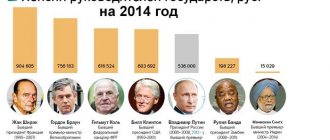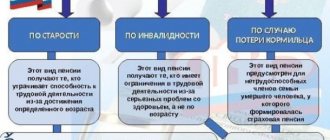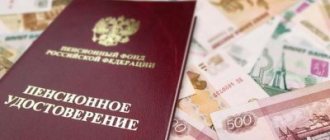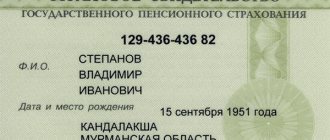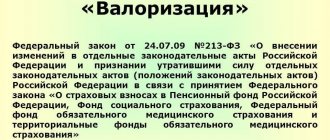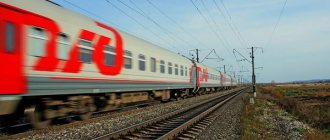The deputy explained the dangers of refusing the funded part of the pension
The proposal to abolish the funded part of the pension for mandatory pension contributions is correct, but not in the form in which it has been received now. This was stated by Deputy of the Legislative Assembly of St. Petersburg Oksana Dmitrieva. In her opinion, you first need to decide what to do with the money you have already accumulated.
“All calculations and actual results proved that the return on the funded part of the pension is significantly lower than the indexation on the insurance part,” the parliamentarian noted. — At the same time, let’s once again record that citizens’ mandatory contributions to the funded part of the pension were lost, and if they were not lost, they were devalued. Let me remind you that since 2014, citizens have not made mandatory contributions to the funded part of pensions; for some reason this was considered a “temporary suspension” of contributions to the funded part of pensions; everything went to the insurance part. It would seem that a rational proposal was made. But I believe that in the form it appears today, it is fraught with consequences and even dangerous.”
Dmitrieva recalled that from 2002 to 2014, citizens made contributions to the funded part of their pension.
“What kind of money this is, where it goes, no one understood. Everyone paid 22% to the Pension Fund, but they didn’t think about where the insurance part was, where the savings part was. But over 12 years, huge funds have accumulated partly from VEB (the state management company), and partly from non-state pension funds. At the same time, the citizens who made the contributions do not remember about them, and for some reason management companies are in no hurry to remind them that this money exists. And that this is 2 trillion rubles,” she said.
The deputy emphasized that no one clearly states what to do with this money. In this regard, the proposal to abandon the funded part of the pension is “a real opportunity to lose them, or rather, to give them away to someone.”
“Therefore, abandoning the funded part is possible, and this is the right decision, but only after the algorithm has been fixed, a number of transitional provisions have been written down and prepared, where it is imperative to clearly establish what we are doing with the two trillion rubles that citizens have contributed over the course of 12 years for the funded part of the pension,” she added.
The parliamentarian is confident that the best solution is to transfer these funds to the insurance department and re-index pensions.
“Only then will this money not be lost. And citizens who want to “play hoarding” with non-state pension funds can do this, but must clearly understand the consequences of their own, exclusively voluntary, decision,” Dmitrieva concluded.
What is a funded pension?
In January 2005, a new type of payment was introduced into the pension system - a funded form. The insurance part of the old-age pension is a cash benefit received by retired citizens every month as partial compensation for their labor income earned before retirement. Cumulative cash payments are formed from contributions made either by the citizen himself or his employer, and additional income from investing these funds.
This type can be formed by persons born in 1967 and later, if they have decided before the end of 2020 from the two available options - to form an insurance pension or an insurance pension + funded pension for 5 years from the time of the first calculation of contributions. If a citizen is under 23 years of age, the marked period is extended until the end of the year of turning 23 years old.
Pension savings of individuals older than 1966 (inclusive) can be contributed exclusively by voluntary contributions under the State Co-financing Program and the allocation of maternity capital funds. You can receive savings in the following order:
- Reach retirement age.
- Contact your insurer.
- Divide the accumulated amounts by the possible survival period to determine the monthly payment amount.
You can manage your funds like this:
- Receive in a lump sum – the entire accumulated amount is received at once. This is available with savings equal to 5% or less of the old-age insurance pension. Those receiving an insurance pension for reasons such as disability, loss of a breadwinner, or receiving state security pension payments have the right to a one-time receipt. An early lump sum payment from the funded part of the pension in 2020 is paid on the same grounds without changes.
- Receive immediate payments for a period of at least 10 years. The basis is pension savings received in old age and formed by contributions under the State Program. co-financing using maternal capital funds.
- Receive every month for life. The funded pension in 2018 will be calculated based on a payment expectation of 240 months: the amount is determined by dividing the total amount recorded in the personal account by 240 months.
Where to transfer the funded part of your pension in 2020
For pension savings, you can choose Russian Pension Fund or Non-State Pension Fund. Concluding an agreement with a management company to manage funds requires a careful study of its reliability and understanding of its capabilities, taking into account the likelihood of license revocation. The Central Bank has compiled a rating of non-state pension funds, with the help of which the funded part of a labor pension can be placed with greater profit and less risk. Among them are NPFs of the largest industrial associations (Lukoil-Garant, Neftegarant) and banking structures (Sberbank, VTB PF).
Such organizations are preferred by government agencies due to their high profitability. The Russian Pension Fund has a lower interest rate; at the end of 2020, the Pension Fund showed a 7% increase in capital investments, and Sberbank - 13%. This factor is very significant for retirees who want to increase their wealth. The transfer amount can be clarified through your personal account on the Pension Fund portal or by contacting its branch, where you will need to submit:
- application for transfer of savings;
- passport;
- pension card;
- SNILS;
- bank account details.
NPFs are required to index pension savings annually in August according to the inflation rate. The percentage is determined by the size of the investment and the profitability of the organization managing these assets. The more profitable the company invests the funds collected by potential retirees, the greater the percentage of additions to existing allowances will be. Since the moratorium remains in place in 2020, you can transfer your savings at any time so as not to miss the opportunity to increase your savings.
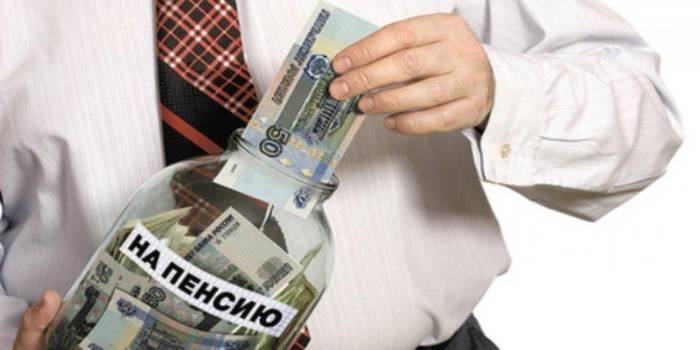
Pensions in 2020, latest news
Changes in legislation that have appeared this year are of interest to a large category of citizens, not only those who have already reached the age of incapacity, but also those who are about to join the category of pensioners. An increase in insurance pensions is provided only for citizens who are not engaged in working activities; social payments have been increased by four percent for all pensioners.
State support now amounts to 8 thousand 562 rubles, the average value of insurance pensions has reached 13 thousand 132 rubles.
Currently, a specially developed point-based pension system is used in calculating the old-age pension. Their number is formed from the size of monthly contributions to the Pension Fund and the number of years during which these payments were made. It is possible to increase your pension points by delaying retirement and accruing it later than the period prescribed by law. Work experience includes caring for sick relatives and children. Moreover, a certain gradation is applied when calculating the pension point. Mothers who raised three children receive 4 times more points than a woman with one child.
Heated debates in the Government of the Russian Federation caused indexing. February's four percent increase in pension payments for the current year may be the last increase. Creating a budget deficit makes it impossible to raise pensions again in the fall, despite the fact that the added interest is three times lower than the expected increase in inflation this year.
A decrease in the pension point by two rubles and 15 kopecks was recorded; this year it is 74 rubles. 27 kopecks The average pension is 8 thousand 562 rubles. The average insurance pension reached 13 thousand 132 rubles.
Letter from FNPR
The text of the letter was posted on the FNPR website on Tuesday. “The Federation of Independent Trade Unions of Russia consistently advocates the exclusion of the funded component from the state compulsory pension insurance system. This issue has not found a practical solution, which leads to legal conflicts,” the text says.
The FNPR has repeatedly indicated that, provided that the funded part is in the state compulsory pension insurance system, it is necessary to be guided by uniform standards, and not to apply separate approaches for each element, the letter notes.
“The Federation of Independent Trade Unions of Russia proposes to stop the practice of increasing the expected payment period and resolve the issue of legislatively removing the funded component from the state compulsory pension insurance system,” the text says.
Advantages and disadvantages of this type of savings
First of all, you should talk about the advantages:
- Freedom. This is the main advantage of the funded pension part; a person can choose freely.
He himself manages the insurance contributions and invests them at his discretion in various non-governmental organizations (read about how you can manage the funded part of your pension in this material). A state pension fund may be selected. This choice is not final; the future pensioner has the right to periodically change it and transfer his funds from one non-state company to another. You can also invest in their Russian pension fund and withdraw it. We wrote about how to return the funded part of the pension to the Pension Fund here. - There is an opportunity to make a profit. If it is profitable to invest the funded part of your future pension, then a person can count on a higher income than in a state fund. Where it is more profitable to invest such a pension is discussed in detail in a separate article.
- Right of inheritance. If a person dies prematurely, the free pension portion may be inherited by his closest relatives. In the absence of such, more distant relatives can act as heirs. Well, inheritance by third parties is not allowed under any circumstances. Read about what happens to the funded part of the pension after the death of a citizen here.
- Everything is insured. If a person invests part of the funds from his pension in the future in a non-state financial pension organization, then a certain risk arises. However, the maximum that an investor can lose is dividends. And 6% will remain so.
- The pension is further increased. There is a co-financing program, thanks to which people can increase their savings portion. For this purpose, additional financial resources are attracted. That is, each person can invest in a pension fund not only the pension savings part, but also other financial assets. And the future pension becomes larger.
On the downside:
- Considerable risk. If the pension part is in a state fund, then the profit is low. But if a person invests in a non-governmental organization, the risks increase. There may be no profit at all if the fund is losing money. That is, this money from investors is not invested properly.
- Cases of fraud. If a person invests in non-state pension funds, then he takes on all the risks. And among such organizations there may be scammers. This means that the investor risks losing the entire funded pension portion.
- Often a person, investing his pension portion in a non-state pension organization, wants to insure his risks. This is reasonable, but may require additional costs.
- There may be no profit. When an employee invests the free part of his pension in a non-state fund, an agreement is concluded with him. But you need to know that if this contract is terminated ahead of schedule, the employee risks losing all the profit that has been accumulated in this organization at the moment.
- Commission services. When a future pensioner calculates his profit from investing the funded pension part of his pension in a non-state pension fund, do not forget about commission services. Given the high level of inflation and low profits of such organizations, there may be no profit at all.
Now you know what the pros and cons of retirement savings are.
Suspension of savings provision until the end of 2023
In 2020, the age limit began to gradually increase. Initially, the bar was 19 years old, and then it was raised on an annual basis. In 2021, the level should reach 22 years. Independent trade unions do not support the practice, citing their own arguments in favor of abandoning such a mechanism.
Under the current principle, the amount of security for insured pensioners tends to decrease. This, according to experts, goes against the original idea of a funded pension as such.
To rectify the situation, the initiators propose to abandon the practice of increasing the payment period. Instead, the authors of the idea propose to use the possibility of removing the funded component from the general scheme of compulsory pension insurance.

